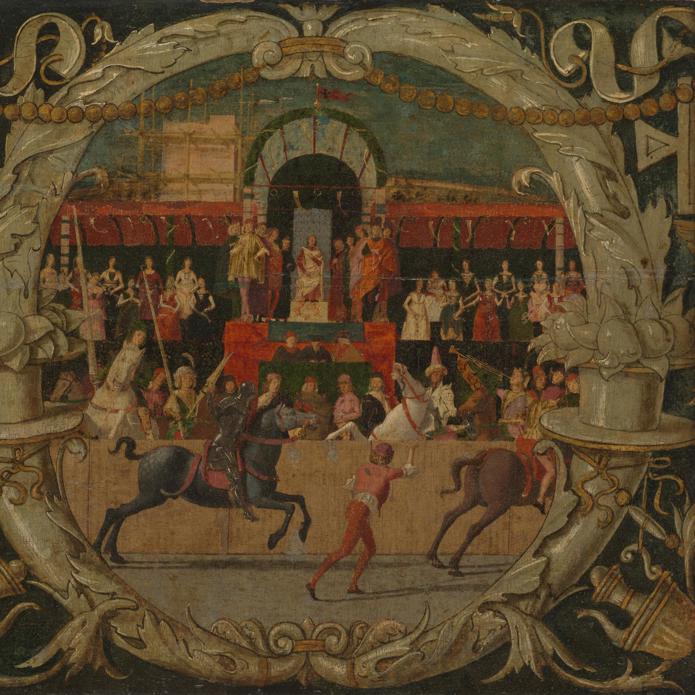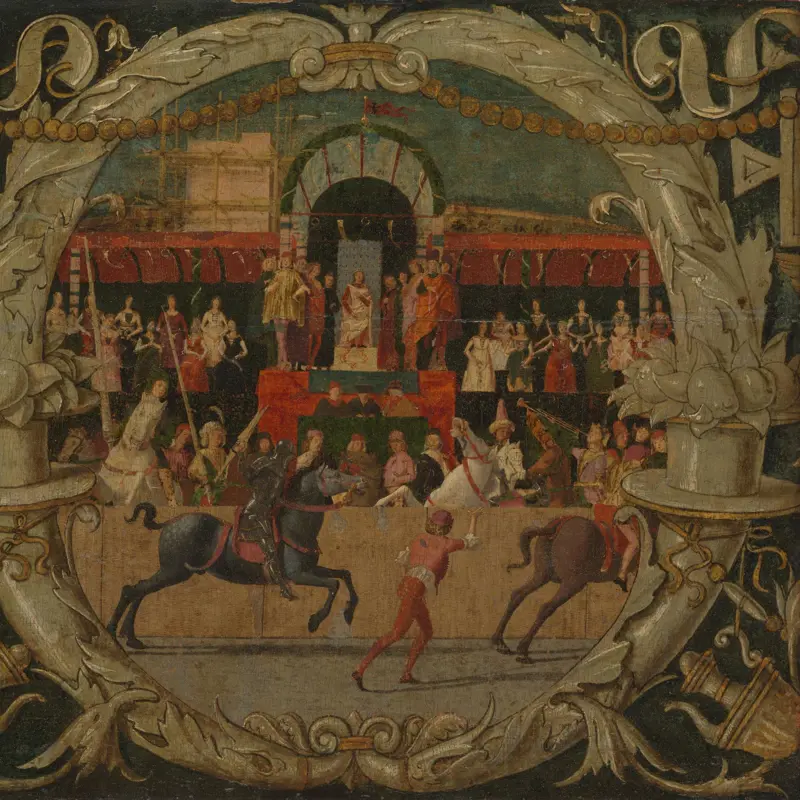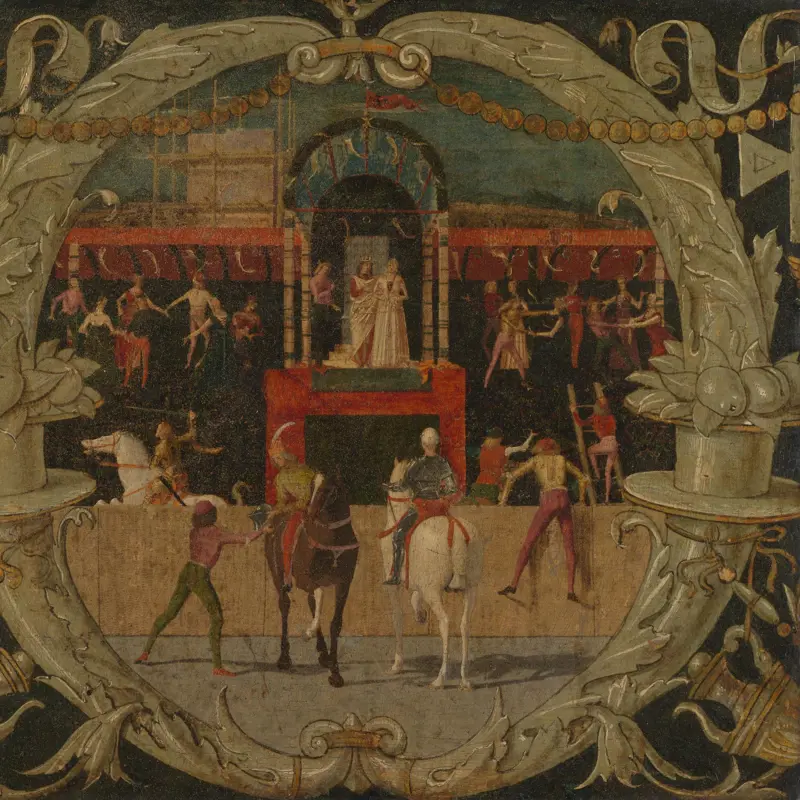Domenico Morone, 'The Rape of the Sabines (before the signal)', about 1490
About the work
Overview
Shortly after the founding of their city, the ancient Romans were faced with a serious problem: they had no wives, and therefore no children and no future. Their leader Romulus came up with an inventive and unscrupulous solution: they hosted celebratory games and invited their neighbours, the Sabines, to bring their families. At a given signal, the Romans seized the young Sabine women, carried them off and married them.
Appalled at this barbarous behaviour, the Sabines waged war, but the abducted women intervened to stop the fighting. Peace was declared, and according to the Roman historian Livy, ‘they made one people out of two’.
This painting is one of two from the front of a cassone, a large decorated chest that was an important piece of domestic furniture during the Italian Renaissance. The Roman games are shown as a contemporary joust, with spectators in fifteenth-century dress.
Key facts
Details
- Full title
- The Rape of the Sabines (before the signal)
- Artist
- Domenico Morone
- Artist dates
- About 1442 - after 1518
- Part of the series
- Two Cassone Panels with the Rape of the Sabines
- Date made
- About 1490
- Medium and support
- Egg tempera on wood (spruce, identified)
- Dimensions
- 45.4 × 49.2 cm
- Acquisition credit
- Bought, 1886
- Inventory number
- NG1211
- Location
- Not on display
- Collection
- Main Collection
Provenance
Additional information
Text extracted from the ‘Provenance’ section of the catalogue entry in Martin Davies, ‘National Gallery Catalogues: The Earlier Italian Schools’, London 1986; for further information, see the full catalogue entry.
Bibliography
-
1951Davies, Martin, National Gallery Catalogues: The Earlier Italian Schools, London 1951
-
1986Davies, Martin, National Gallery Catalogues: The Earlier Italian Schools, revised edn, London 1986
-
2001
C. Baker and T. Henry, The National Gallery: Complete Illustrated Catalogue, London 2001
About this record
If you know more about this work or have spotted an error, please contact us. Please note that exhibition histories are listed from 2009 onwards. Bibliographies may not be complete; more comprehensive information is available in the National Gallery Library.
Images
About the series: Two Cassone Panels with the Rape of the Sabines

Overview
These panels come from the front of a cassone, a large chest that was often painted with narrative scenes. Such chests were widely made throughout Italy from about 1400 to the early sixteenth century. They were often associated with marriages, and were one of the items of furniture that a groom was expected to acquire for his home in expectation of his bride.
The decoration of cassoni often reflected this link, providing what were felt to be examples of appropriate behaviour for husbands, wives and children, drawn from classical literature or history. The tale shown here, of how the early Romans abducted women when they couldn't find wives, was part of ancient Roman history. It was recounted by Livy and Plutarch, both of whom were translated into Italian in the fifteenth century.
The panels are painted on two horizontal planks of spruce. They have been cut along their side edges and may originally have been joined together.


